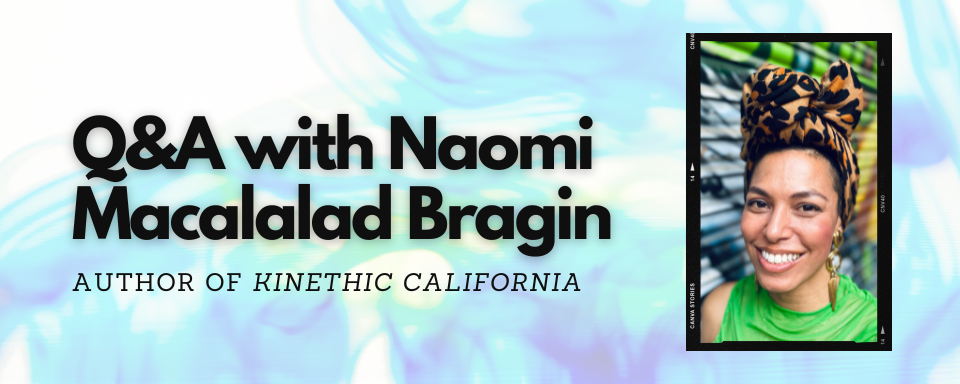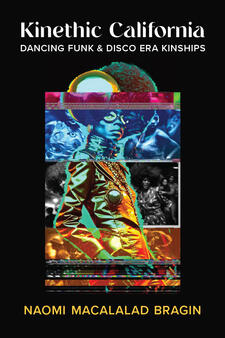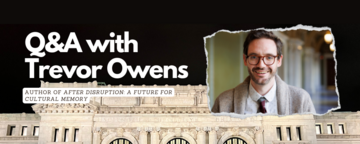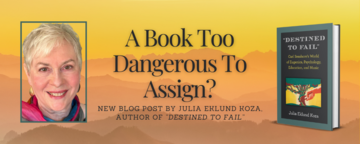Q&A with Author Naomi Macalalad Bragin

This guest author post is a Q&A with Naomi Macalalad Bragin, author of the new book Kinethic California: Dancing Funk and Disco Era Kinships, from the University of Michigan Press. The book is available in hardcover, paperback, and open access ebook.
Your book includes a number of interviews with dancers. How did you start your research and identify who to speak with?
At the time I began interviews it was 2009 and I was studying within a small program housed in the UC Berkeley Anthropology department, called the MA in Folklore. My love for the dance called popping seeded the project, before I began expanding to write about streetdances like waacking/punking and locking. The Northern California Bay Area’s African Diaspora dance and hip hop activist communities had been teaching me these embodied histories since 1995. I began reaching out to dancers I had personal connections with, who formed part of the Bay Area history of popping they have been handing over to their dance kin, by word of mouth and in movement, since the 1960s. Dancers told me who they thought I should speak with and that’s how I was given the gift to listen to stories coming from Oakland, San Francisco and Richmond, as I traveled over routes dancers also traveled as young people shaping dance histories: visiting the homes of Granny Robotroid (Deborah Delois Johnson, who became a dancestor in 2013) and Will Randolph of Oakland’s Black Messengers; meeting Pop Tart at Fisherman’s Wharf in San Francisco; crossing back over the Bay Bridge to Richmond to talk with Renée Lesley of the Lady Mechanical Robots. There are many more dancers I did not get to meet along the way; they also have a place in these histories. I had to let go of a Western Eurocentric notion of wholeness that inevitably fails to be truly inclusive, often in favor of sitting at length with stories of lesser known dancers who are stars in this expanding galaxy of collective life history as much as those who have become world renowned.
If readers would like to look up videos of some of the dances you discuss in your book, are there any specific dancers or dances you would recommend?
The book endnotes include URLs (hyperlinked in the e-book version) to online videos of some of the dancers and dance styles I write about. I recommend that readers consider who sparks their interest as they figure out which cyber routes to trace deeper. Also, videos can only offer one form of study. Finding ways to connect with the dances and be in community with the dancers in real life cultural contexts is a critical element of studying the dance histories in this book.
Part of the publishing process that many authors find challenging is choosing a title that captures the essence of the ideas discussed in their book. What was that process like for you?
Coming up with pithy titles is not my strength. I was seeking words to express the idea of dance kinship that I connect to black studies theory and philosophy, while keeping visible the material cultural forms that kinship takes–the multitude of dances themselves. That’s why playing with made-up words like kinethic, dancestry and danscendance, was a key part of my writing process. The title was changing in my mind up until almost the last moment of the publishing process, and so I’m thankful for the patience of all the editors and staff at University of Michigan Press, who stayed in dialogue with me along the way. Ultimately we went with Kinethic California, to highlight the ethics of kinship I see at the heart of dancers’ collective practices of making dance histories that interweave, disrupt and diverge, as they shape a larger global interconnectedness. These kinships of funk and disco era dance emerge from an open-ended process that is improvisational and always in motion.
What surprised you the most when writing the book?
Having been living in and around the cultural material of these histories for so long, I had to unsettle a feeling of comfortable self-assurance in regard to what I thought I knew, the ideas I was holding onto, and how I was relating my experiences of dancing over the years to that body of knowledge. Comfortability kept me dwelling in staid habits of thinking about the dances. But the process of critical study is essentially about questioning received knowledge and unsettling assumptions—to ask how I might see differently and inhabit a space of wonder and surprise. I had to struggle with being in extended positions of discomfort, so that what I thought I knew could become new again. That’s when I began to feel that dancestry was asking to be written about in a fundamental way. These ideas of ancestry and lineage did not come through until close to the end of the writing, yet they became the book’s weave, transforming my interpretation of the dances as collective ways of knowing, feeling and belonging.
What lessons do you hope readers will take away from Kinethic California?
I hope this book will be put down as often as it is picked up, meaning reading is just one practice that informs the embodied process of study. I hope readers will also try out the ideas in their body, listen and move to the music I cite, seek out and learn from the dancers who are still here with us. I tried to write shorter sections that could be read alone or situated within their longer chapters, with the idea that readers aren’t required to engage in a linear reading but can open up the book where they like, make their own connections, and follow multiple paths through the material. I hope the ideas in the book feel generative for readers as far as helping inspire new paths for work in dance and black studies that go far beyond what is encompassed in this writing. I say in the book that these dance histories are like threads of an unfinished garment (of which this contribution adds a small part) that others will hopefully pick up and transform by bringing their experiences and ideas into the fray.



